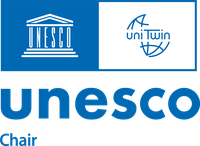Project Investigator: Mr. Karim Bataineh
Episodes of violence and conflict on a global scale highlight the need for individuals and communities to come together in meaningful ways to bring about positive social development and stable, peaceful social conditions. This is particularly true for individuals who find themselves in peacekeeping scenarios, such as North Atlantic Treaty Organization (NATO) personnel. One driver that can lead to such cohesion on an individual level is the concept of empathy.
This thesis focuses on the exploration of several key factors which are central to the emergence of empathy. Drawing from community focused, Interactional Field Theory the process by which empathy is conceptualized, developed, and applied is further expanded. A quantitative study was utilized using surveys to measure the relationship between social interaction, sociodemographics and empathy in a unique case study of NATO cadets.
The literature and corresponding research data identifies possible implications of the concepts in the fields of community development, international development, and conflict resolution. The results indicate that for military cadets in training, gender, number of interactive facilitated dialogues one participates in, and number of countries one visits are the most significant variables contributing to empathy development. The results are interpreted and policy recommendations are provided in the context of military training and educational programs aimed to achieve positive community development and conflict resolution.
PDF document, 1.3 MB
Numerous episodes of conflict have highlighted the need for communities and individuals to come together for peace building and sustainable community development. Empathy is seen as key to building social cohesion amongst different groups, and a characteristic that can be developed amongst individuals. As empathy is further cultivated it can act as the catalyst for increased understanding and interconnectedness, leading to not only limiting the devastating effects of conflict, but also to positive social development, capacity building and stable, peaceful social conditions on a local as well a global scale. Interaction among people, particularly among diverse people, is identified as vital for community development. Interaction, like empathy, is a fluid term that could be stretched to include numerous and innovative ways for people and communities coming together to communicate and address social issues. This study explored ways in which both concepts can be fused together, and through an exploration and better understanding of the relationship between the two, implications to community development, peace building and conflict resolution emerge.





